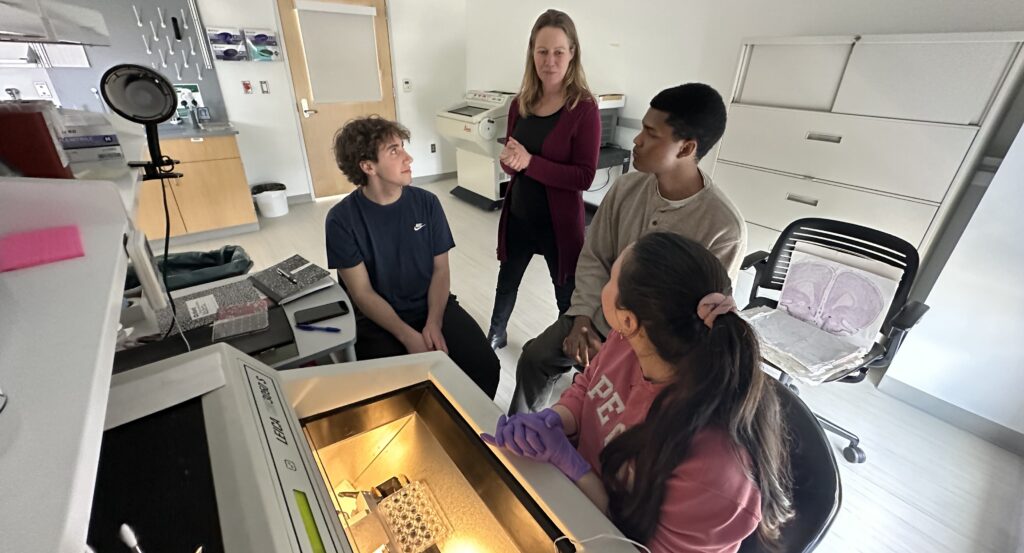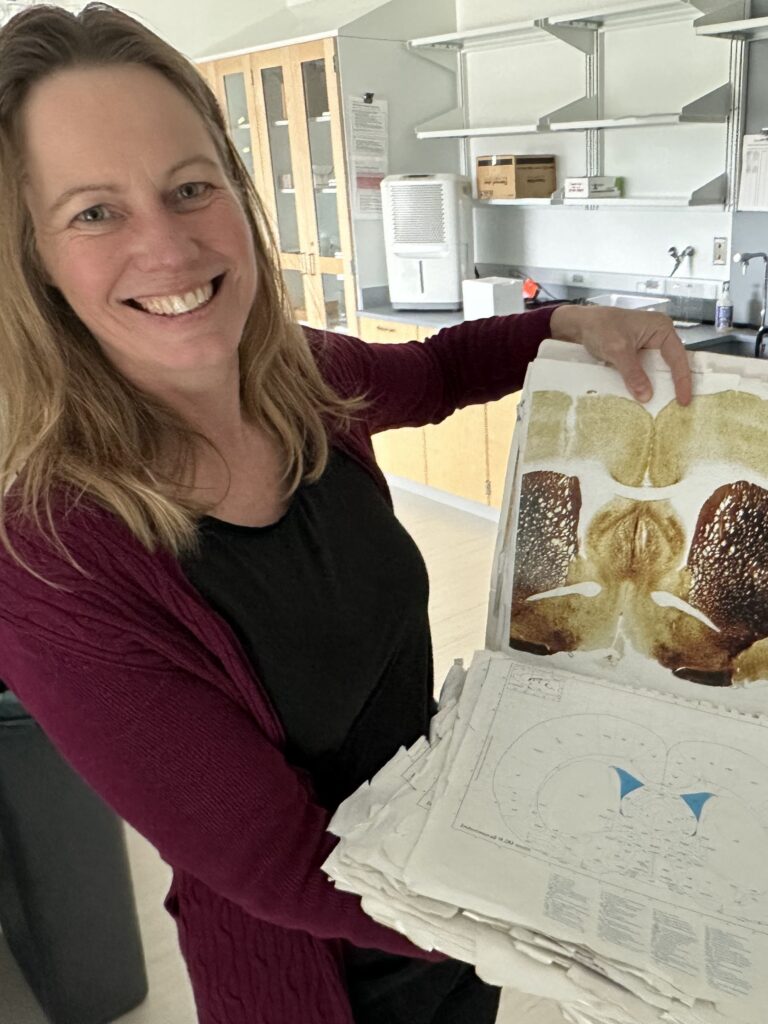July 2024
UG Cole Parker was featured in the MSU Psychology Student Research Spotlight. Check out why he is interested in Research in the field of Psychology/Neuroscience, what has surprised him about working in the Veenema Lab, what his plans are for the future and more.
May 2024
UG Cole Parker received the MSU CSS Provost Undergraduate Research Initiative Award to continue to do research in the lab over the summer focusing on the role of oxytocin in the regulation of social play behavior.
April 2024


As part of the Autism Awareness Month, Alexa Veenema was interviewed about the research in the lab on the roles of oxytocin and vasopressin in social play in rats and how this provides insights that may be helpful for autistic children that are currently being experimentally treated with oxytocin or vasopressin-related drugs.
Alexa Veenema gave a talk at her alma mater, the University of Groningen, the Netherlands, as part of the GELIFES seminar series. She shared recent research findings by Jessica Lee and Samantha Bowden demonstrating that oxytocin and vasopressin regulate social play in juvenile rats through reward-related neural circuitries and often do so sex-specifically.
January 2024
Alexa Veenema, Daphna Joel (Tel-Aviv University), and Caroline Smith (Boston College) published the article Beyond the binary: Characterizing the relationships between sex and neuropeptide receptor binding density measures in the rat brain in a special issue on Sex/gender diversity and behavioral neuroendocrinology in the 21st century in the journal Hormones and Behavior. This article challenges the concept of a female brain and a male brain. Sex differences do exist in numerous parameters of the brain. But these differences are part of a large set of variables that interact to affect many aspects of brain structure and function. Hence, findings of sex differences at the level of single brain measures may not hold up when taking into account the brain as a whole. To test this, we reanalyzed two datasets consisting of measures of oxytocin, vasopressin V1a, and mu opioid receptor binding densities in multiple brain regions of male and female rats. We found that sex differences are (i) rarely dimorphic (which means that there is no overlap between female and male measures), (ii) largely persistent across estrous stage and parental status, (iii) variable across age and context. When taking together all brain measures showing sex differences that are not sexually dimorphic, we found that individual brains are ‘mosaics’ of female-typical and male-typical measures rather than having either only female-typical or only male-typical measures. Thus, even in laboratory rats housed under similar environmental conditions, there is no evidence for the existence of a female brain and a male brain. These results highlight the limitations of the binary framework for interpreting effects of sex on the brain and encourages a focus on measures showing dimorphic and persistent sex differences to study the contribution of sex on brain function.
